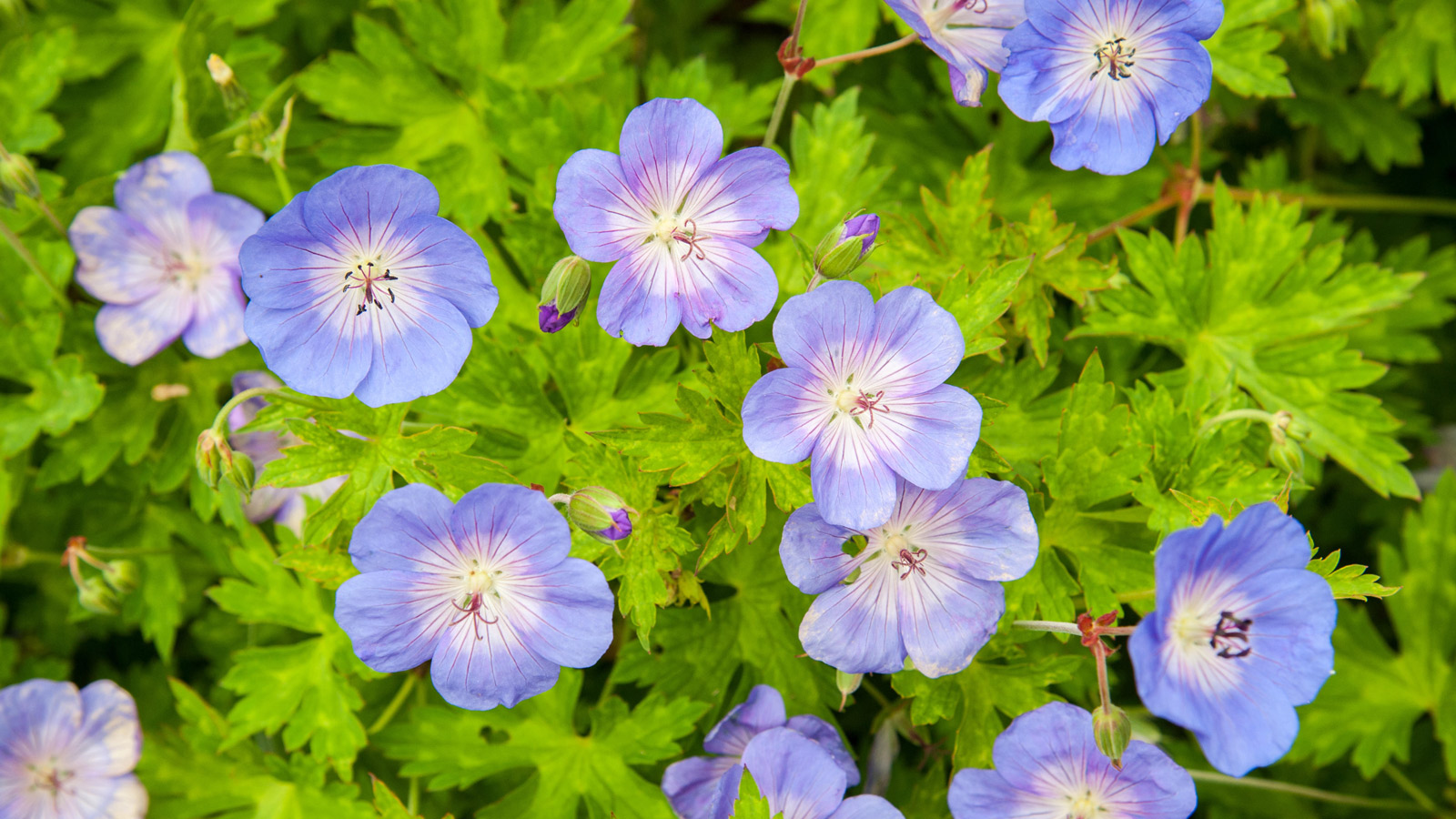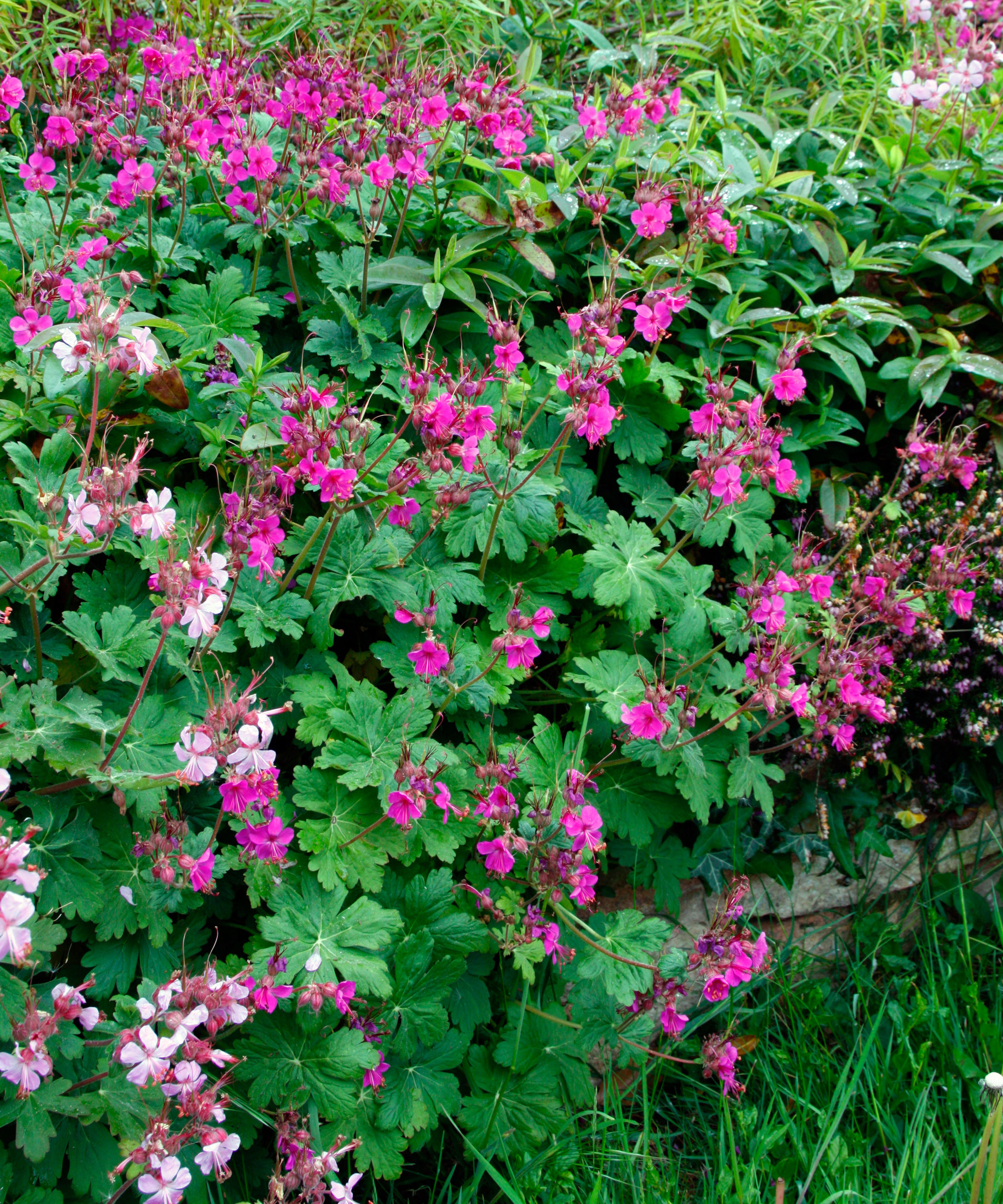
Hardy geraniums (also known as cranesbills) are a fabulous choice for beds and borders and the best varieties provide pretty and colorful blooms for months, but if geranium leaves are yellow, it’s a sign something’s not quite right.
If you’re in the know about hardy geranium care and growing, they’re typically an easy-going addition to the garden.
One problem that can arise, though, is yellowing leaves, and we’ve asked gardening experts to share both the causes and what to do about it here.
5 reasons why geranium leaves turn yellow
One of the many benefits of growing geraniums in flowerbeds, borders, and containers is that among the best hardy geranium varieties you can find flowers to suit your soil, and the situation. But if plants that were thriving develop yellow leaves, something’s amiss and these are the possibilities.

1. Old leaves
The first reason why geranium leaves can turn yellow applies to pelargoniums rather than hardy geraniums, but it’s worth knowing if these are what you’re growing as both go by the name geranium.
‘It is quite common for the lower leaves on plants to turn yellow and fall off,’ explains Amateur Gardening expert Steve Bradley. ‘Most plants will shed older leaves that are no longer contributing to the growth and wellbeing. This happens more rapidly if the leaves concerned are fully or partially shaded.’
As for yellow leaves on hardy geraniums, this can be a result of the issues that follow.
2. Lack of sun
A lack of sun can be a cause of yellowing geranium leaves. ‘Insufficient sun exposure can cause the leaves of geraniums to turn yellow,’ explains Susan Brandt, co-founder of Blooming Secrets. ‘This is because geraniums are sun-loving plants that require a sufficient amount of sunlight to thrive. When they do not receive enough sunlight, their chlorophyll production decreases, resulting in yellowing leaves.
‘Geraniums typically need at least six hours of direct sunlight each day to maintain their vibrant green color and healthy growth. However, it is important to note that the exact amount of sunlight required may vary depending on factors such as the specific variety of geranium and local climate conditions. If you live in a hotter climate, select a location where the plant gets morning sun and afternoon shade.’
3. Overwatering
Yellow leaves can be a sign that geraniums are getting too much water. Check whether they need watering by putting a finger into the soil. When it feels dry at a depth of 1 inch, then it’s time to water geraniums, but don’t do so before.
Wondering about whether yellow leaves could alternatively be a sign of underwatering geraniums? It’s less probable but in this case, it’s leaf tips and edges that turn yellow first. Follow the rule on when you water, as above, though, and this can be avoided.
4. Want of nutrients
Yellow geranium leaves can be a sign that they need to be fertilized. ‘When geranium leaves turn yellow, it is often a sign of a nutrient deficiency,’ says Susan Brandt. ‘Plants require a balance of essential nutrients to thrive, and any imbalance can result in visible symptoms such as yellowing leaves.
‘One common cause of yellowing leaves in geraniums is a lack of nitrogen. Nitrogen is an essential nutrient that promotes healthy leaf growth and overall plant vigor. When there is a deficiency of nitrogen, the leaves may turn yellow from the bottom up.
‘Another potential cause of yellowing leaves in geraniums is a lack of iron or magnesium. Iron deficiency can result in interveinal chlorosis – yellowing between the veins – while magnesium deficiency can cause general leaf yellowing.
‘To remedy this lack of nutrients and restore healthy foliage to geraniums, it is important to provide the necessary nutrients through fertilization. A balanced fertilizer containing nitrogen, iron, and magnesium can help address these deficiencies.’
5. Cold weather
Yellow geranium leaves can be the result of a cold snap in the spring or unseasonal conditions where it’s cool and wet for a while. When conditions improve, new green leaves can grow.
Note, however, that hardy geraniums will be dormant in the winter, so yellow leaves in fall are to be expected.
FAQs
How often do you water geraniums?
Rather than water geraniums on a schedule, it’s preferable to check the soil. When the top 1 inch is dry, then they need to be watered. Geraniums prefer to be grown in well drained soil, which can help prevent overwatering. Be mindful that watering plants in containers is a little different from watering those in beds and borders since the soil dries out more quickly.
Geraniums can put on a wonderful display in the summer garden and are generally easy to care for. One task that is worth undertaking is deadheading geraniums to keep their fabulous flowers coming. Older plants, meanwhile, may need dividing to keep geraniums blooming beautifully.







